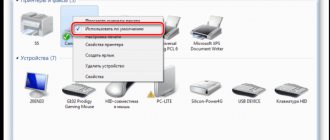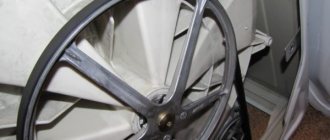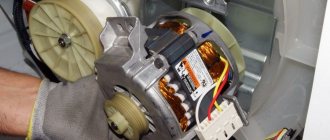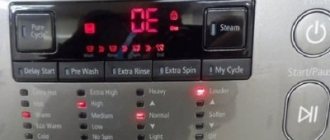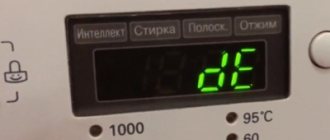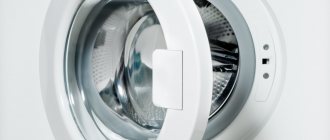A breakdown of a household appliance always brings some inconvenience. In this article, we will look at what to do if you are about to start cleaning, but the vacuum cleaner does not turn on.
Relevant for the following brands and models of vacuum cleaners: Aura Roboclean, Bork, Bissell, Bosch, Daewoo, DeLonghi Colombina, Dexter, Dyson, Electrolux Ergorapido, Extraflex Ergorapido, Extraflex; Hotpoint Ariston / Hotpoint Ariston, Kambrook / Kambrook, Karcher / Karcher, Kirby / Kirby, LG Kompressor, Suction Power / LG Compressor, Suction Power; Miele, Philips, Polaris, Rainbow, Redmond, Rolsen, Samsung, Thomas Twin, Vitek, Zanussi, Zelmer Aquawelt, Solaris Twix , Solaris Twix; Vityaz, Typhoon and others, including automobile, washing, battery and construction models.
So, let's go!
What to check first
Some of the problems that caused the device to fail can be fixed by owners themselves, without the help of specialists.
Is the socket working?
First of all, check that the outlet is working properly:
- Plug in another household appliance and see if it works. It is best to turn on a small lamp or table lamp - if the socket is working, the lamp will immediately light up.
- Try plugging the vacuum cleaner into a different outlet and see if it works there.
Is the bag too full?
Quite often, the vacuum cleaner does not turn on because the garbage container is full. When the dust bin is completely clogged, air passes through it more heavily and the suction power decreases. The load on the electric motor increases, and eventually it will overheat, shut down, or fail.
Modern models are equipped with an indicator that signals when the bag is full. If there is no such “red light”, listen to the sound of the engine: when it is working for wear, you can hear an increasing hum. Often the unit starts to “stink”.
If the bag is not overfilled in time, the engine will overheat. Electronics or a thermal relay can track this moment and turn off the engine itself - then just empty the bag and let the car cool down. If there are no sensors, the motor will burn out and the equipment will have to be repaired.
Have large objects gotten into the hose?
Debris stuck in the hose will lead to a drop in suction power, and as a result, overheating and engine failure. Usually the culprit is large objects (rags, children's toys) that got inside the sleeve or telescopic tube and could not move into the dust collector. But sometimes small objects also get stuck - for example, a toothpick stands across the channel, catches other debris and forms a plug.
The hose, like the dust collector, must be cleaned - however, this will be much more difficult to do.
Is the engine protection filter dirty?
The motor protection filter, located immediately behind the garbage bag, is subject to regular contamination. Small dust particles seep through the dust collector and settle on the filter: as a result, the passage of air becomes difficult and the engine heats up again.
It is enough to clean the filter once every 5-6 weeks.
Is the cable or plug broken?
The cable of the vacuum cleaner is constantly in motion during cleaning - the cable clings to corners, gets under furniture, and the unit itself often runs over it. All this negatively affects the integrity of the cable.
- Check the cable. Sometimes the damage can be determined by torn insulation, but often the metal strands are damaged internally, and the insulation does not cause suspicion. Open the case and find the place where the cord connects to the electrical board. Plug the cable into the outlet, take a multimeter and measure the voltage at the connection point. If there is no current, the problem is either the cable or the plug.
- Replace the plug or its parts. If the plug is removable, open it and look for burnt contacts or other defects. Simply cut off the permanent plug from the wire and replace it with a new one.
If the other plug does not give a positive result, then the final cause is in the cord - replace the whole thing.
How long did the equipment work?
If the vacuum cleaner stalls, check how long the equipment was running before. It is possible that after a long cleaning it simply overheated, and the electronics turned off the motor to cool it down. Wait a while (at least 20-30 minutes) and your assistant will be ready to work again.
Is there a burning smell?
If during cleaning you smell a burning smell, then most likely the armature or stator winding has burned out. In this case, you cannot do without qualified repairs - you will have to replace the burnt part, and in some cases the entire engine.
Sometimes they suggest rewinding the armature and stator windings; we recommend looking at the economic feasibility. Most often, a new assembled module will be cheaper.
https://www.youtube.com/watch?v=f1r61XNqIpk
Reasons why the vacuum cleaner may not turn on
The very first and main reason is engine overheating. This happens especially often after prolonged and uninterrupted operation on hot days. There can be no repair options here. You will only need a complete replacement of the motor, which costs, depending on the model, about 20-25 dollars.
What to do if the vacuum cleaner does not turn on:
- Check the outlet, because that could be the reason. Just connect another working device into it;
- Check the vacuum cleaner cord plug and the cord itself, at least visually. There should be no kinks or damage;
- Disassemble the vacuum cleaner (this is usually easy to do) and find the place where the cord is connected to the switch. The switch and the cord itself must be intact, i.e. without visual damage. Next, we check whether current is flowing to the brushes, and if current is flowing to the graphite brushes, then at a minimum, this means that either the brushes or the electric motor itself are broken.
As soon as you disassemble the vacuum cleaner in off mode, plug it into a power outlet and activate it in disassembled form. In this case, the engine may spark weakly, which may mean:
- The graphite brushes are badly worn;
- There is a short circuit in the armature winding;
- During operation, the load on the engine was very large, and it simply could not withstand it.
Sometimes it is enough to simply replace the graphite brushes, and you can do it yourself. However, we cannot exclude the possibility that after replacing the brushes the engine will continue to spark. This indicates a short circuit in the armature windings, and in this case it is unlikely that you can repair the vacuum cleaner yourself; professional knowledge will be needed here.
What can you advise in this case? Nothing special: take your vacuum cleaner to a service center - only there they can help. Well, if you have an old model, you can completely throw it in the trash and go to the store for a new one. Fortunately, there are now many good vacuum cleaners with an aqua filter, as well as cyclonic models with wide functionality.
What requires repair at a service center
So, the vacuum cleaner switched off and still won’t turn on. Let's check which breakdowns can be fixed by professional technicians.
Broken switch
Vacuum cleaners have two types of power buttons - mechanical and touch.
Mechanical buttons are found on early models. As a rule, they break down gradually: they are not fixed in the working position, act up from time to time, then turn on every other time, and then stop working completely. The reason is normal wear and tear. At home, the only solution is to replace the switch.
Touch switches are installed on modern vacuum cleaners. Most often, they break due to moisture entering, which oxidizes the contacts, or strong mechanical stress. You can still fix this breakdown yourself, but not always - sometimes this type of button is easier to replace.
At a service center, you can try to restore an existing switch. Video example:
Engine burned out
Repairing a burnt-out motor at home is not easy, unless, of course, you have certain qualifications.
There are several reasons for engine failure:
- The stator or armature winding is shortened, which causes the current value to sharply increase. What to do: dismantle the fan and electric motor, then check the resistance of the stator and rotor windings.
- There is a burning smell, that is, the armature or stator winding has already burned out. What to do: disassemble the motor and replace the burnt part. In some cases, the anchor can be restored.
- Sparks in the brush-commutator assembly. A little sparking in the electric motor is acceptable, but excessive fire will cause the commutator to burn and burn out. The main reason is that the brushes are poorly ground to the commutator plates due to wear or uneven pressure. What to do: replace the brushes or brush holders and clean the commutator.
- Fast heating of the motor. The reason is a short circuit between the turns in the armature winding. What to do: disassemble the motor and check the winding. If there is a short circuit, repair the anchor.
Control board burnt out
The triac on the control board often stops functioning - the element that is responsible for the operation of the power part and regulates engine speed. As a rule, a power cable from the network runs to the triac, and wires to the motor run from the triac.
Try connecting the motor directly to 220 volts (be careful!!!). If the motor starts working, the triac must be replaced.
What you can do on your own
What should I do if the vacuum cleaner turns off during cleaning and does not turn on again, or when it does not turn on after storage? First you need to understand what happened. The algorithm of actions (and it must be performed sequentially) will be the same for all devices, regardless of the type of dust collector, be it a container, bag or aquafilter.
- Check the power source. If there is electricity in the apartment, try plugging the vacuum cleaner into a different outlet. Perhaps the breakdown did not happen to him, but to the socket.
- Inspect the power cord and plug for breaks, kinks, or other defects. The plug should not be melted, there should be no visible damage in connection with the cord or on it itself.
- The next likely problem is the dust collector. If it is clogged, a safety shutdown may be triggered. Empty the dust container or change the bag. Check the hose to see if it is clogged with large debris.
Dust container is full
If the vacuum cleaner does not come to life at any stage of the diagnosis, the problem is a broken or burnt out motor. In this case, only service technicians will help, who will test the device on professional equipment and repair it.
Checking the serviceability of the electric motor
If there is voltage at the output of the triac, the reason is in the motor. But before drawing such a conclusion, check the thermoregulation relay. It is responsible for protecting the engine from overheating. When the device operates for a long time, the housing heats up, which leads to the device turning off. To fix this problem, just let the engine cool down. After this, the vacuum cleaner will work again.
If the reason is not in the relay, then check the brushes. When worn, the chain between the winding and the rotor disappears. The parts must fit tightly to the rotor and have some margin along the way. Over time, the brushes grind in, the core wears off, which leads to an increase in the area of contact with the commutator. They work until they wear off.
In some cases, to restore the functionality of the mechanism, it is enough to replace the brushes. You can complete the task yourself. Next, the stator circuit, rotor, and brushes are checked. If everything is fine with it, then the reason may be in the rotor winding. This is an expensive part.
The fact that the electric motor has burned out is indicated by the appearance of a burning smell. If there is no smell, then there is a chance to fix the breakdown without buying a new motor. The engine cannot be disassembled, so the wire connections are checked through the holes in the housing. Check the connection points of the windings to the terminals and brushes. During intensive use, the product experiences constant vibrations, the wire may break and the circuit will be open.
Try to tighten the wire and secure it. If this cannot be done, solder another piece of a few centimeters. This is quite difficult to do; you have to solder through a small hole. But it is possible to complete the task, as a result of which the device will work again. This is much cheaper than purchasing a new motor, which is the most expensive part of the device. If the product has already served its service life, then replacing the engine is unprofitable; it is better to purchase a new vacuum cleaner.
Damaged wire
The most loaded place is the wire entrance to the housing. In this part it is reinforced with a special casing. But this does not always help against damage.
If when you turn on the vacuum cleaner there are no signs of life, but when you move the cord near the body it starts working, the problem has been identified.
We need to ring the wire. First, one core, bending it in all suspicious places, then the second. The damage can be determined immediately; it will be clear from the sound.
The damaged piece is cut off and replaced.
Power button
If the power button is broken, it can be repaired without outside help.
Attention! You should not carry out repairs yourself if the vacuum cleaner is under warranty. In this situation, it would be correct to take the device to a service center, since this problem is covered under warranty.
Incorrect operation of the device, the habit of turning on the vacuum cleaner with your foot, leads to the start button getting stuck and breaking down. A button that does not lock needs to be replaced.
Microswitch
If the problem is a worn microswitch, then there are 2 possible solutions.
- Complete replacement of the switch with the same one.
- Repair. You will need to clean the oxide deposits from the button by first disassembling it. When it is not strong, wipe the contacts with ethanol without disassembling them. This requires a strong press on the button.
You can handle the problem yourself.
Clogged filters
Before you start cleaning filters, you should understand their classification. There are several categories:
- Water - located above a reservoir of water. Once on the surface of the filter, the dust gets wet and settles to the bottom of the container, which not only cleans but also humidifies the air.
- Cyclonic - equipped with special blocks in which, under the influence of a whirlwind, dust settles.
- Fine cleaning - thanks to the use of special impregnated fibrous material, they are the most effective dust absorbers.
- Bags—disposable (paper) or reusable (made of synthetic fabric)—keep dust inside.
The filter cleaning process consists of several stages:
- the vacuum cleaner is disconnected from the network;
- open the housing cover and take out the filter;
- washed with water and dried;
- a completely dry filter is installed in place.
However, each type of filter has its own nuances:
- Filter bags are not washed with water, but are emptied as they are filled. Disposable ones are replaced with new ones.
- Cyclone filters should be cleaned after each cleaning - all elements are washed under cold water.
- Water filters are disassembled into two parts (the container and the filter itself), after which each element is washed under running water.
- Fine filters can be disposable, made of paper, or reusable, made of polymer. In the first case, the filter can be purged with air. In the second - wash.
What exactly can you do yourself?
- Clean the dustbin, filter, and vacuum cleaner hose.
- Change the power button. Replace burnt parts and, if necessary, plug.
- Check the wire and control board.
- Disassemble the engine and (if you have experience) try to restore it. More details in the following articles about vacuum cleaners.
You can also buy a robot vacuum cleaner: they operate on batteries with a voltage of no higher than 15 V, so their motor is unlikely to overheat. Repairing a robot is much easier. Examples of brands are Iclebo Arte and iLife.
